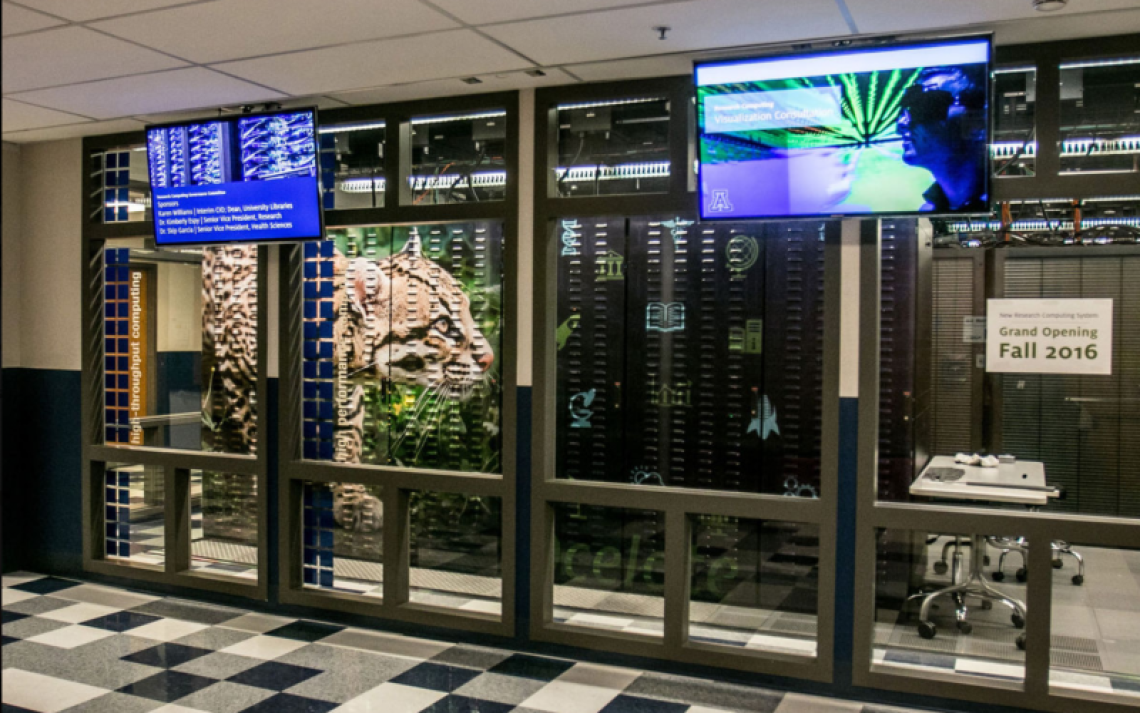Black Hole, Antarctic Sea Temps No Problem for UA Computers

The Arizona Daily Star recently published an article highlighting the computing systems available in the Research Data Center and the science that is accomplished with these resources.
A couple of cooled “cats” in the basement of a building off Speedway are simultaneously recording sea temperatures in the Antarctic and predicting the shape and size of the black hole at the center of the Milky Way — among many other things.
“Ocelote” and “El Gato” are the two most-recent components of a high-performance research-computing system at the University of Arizona that grows and shifts to meet demand and also allows researchers to accept donations of grant funds to buy more processors.
Mike Bruck, assistant director for research computing at UA, prefers the term “high-performance computing” to describe what his arrays of processors do. He reserves the word “supercomputer” for the giant banks of processors put together by the National Science Foundation at eight university and institute sites across the country.
Those truly supercomputers contain 200,000 to nearly 1 million processors. The research computers at the UA have about 10,000. “Ours are pretty super, but they’re pretty small compared to the big NSF computers,” Bruck said.
When chemist Steve Schwartz moved his research group to the UA in 2012, he could have bought his own computers with the startup money he received, but he knew he would have to set up and maintain them.
He instead bought into the university’s first foray into research computing.
When that system was upgraded for a second time this year, he used $200,000 in leftover startup money from the Arizona Board of Regents Technology Research Initiative Fund and a $200,000 match from the National Institutes of Health to “buy” 1,500 processors on the UA’s new “Ocelote” system. The Ocelote cluster adds nearly 10,000 cores and 60 terabytes of memory.
“I don’t actually ‘own’ anything,” said Schwartz, but his group has first dibs on using his processors.
It’s needed, he said. His 13-member group, which does theoretical and computational studies of complex systems, has projects that require a good deal of computing power.

